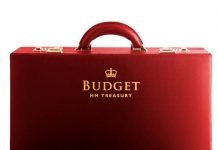As expected, the RBA Board held its policy settings steady. The Governor confirmed a review of the bond purchase program at the February Board meeting. He did bring forward his estimate of when the economy will return to the pre-Delta growth path from the second half of 2022 to the first half. That accords with Westpac’s view although we are forecasting GDP growth in 2022 of 6.4% compared to the Bank’s current forecast of 5.5%.
As expected, the Reserve Bank Board decided to retain the current policy settings at its December Board meeting.
The overnight cash rate was held at 0.1%; the Exchange Settlement rate stayed at zero while the Bank will continue to purchase securities at the rate of $4 billion a week until at least mid February 2022.
Given the recent firming market sentiment that the FOMC is likely to announce an acceleration of its taper plans at its meeting next week there was some speculation that the Board might announce plans to scale back the taper in February.
That seemed highly unlikely to us given the Governor’s firm commitment in November that the tapering decision is scheduled for February. After the controversy over the Yield Curve Control policy the Board would want to be seen to be mixing its signals.
The Governor confirmed that the decision in February would be based on three criteria the actions of other central banks; how the Australian bond market would be functioning; and expected progress towards the full employment and inflation goals. In effect the decision will be impacted by the economic forecasts, which are set to be reviewed before the February Board meeting.
We expect the Bank will strike a “middle ground” position on its bond purchases by scaling back purchases from $4 billion to $2 billion per week. The program would be phased out by the May Board meeting.
The Bank will not have changed its forecasts for the December meeting with the pick-up in wages growth “expected to be gradual” while “a further, but only gradual, pick up in underlying inflation is expected.”
The key sentences on inflation are identical to the November Statement.
On the other hand, there is more “colour” around the wages discussion “Job advertisements are at an historically high level and there are reports of firms finding it difficult to hire workers.”
The Bank will need to change its growth forecasts at least for 2021 following the September quarter GDP report. We assess that the Bank expected that the economy contracted by 2.5% whereas the contraction was “only” 1.9%. With the smaller than expected contraction and, presumably, no offsetting reduction in the speed of the recovery the economy would be expected to return to its pre delta path somewhat earlier.
The economy had previously been assessed to return to its pre- Delta by the second half of 2022 whereas in today’s Statement the Governor notes “The economy is expected to return to its pre- Delta path in the first half of 2022”.
On December 3 Westpac released its revised growth forecasts following the National Accounts. We expect GDP growth of 6.4% in 2022 compared to the RBA’s current forecast of 5.5%
We expect GDP to be 6.6% higher in December 2022 than in June 2021 compared to the 5.5% we forecast pre-Delta.
We expect GDP to be 4.4% higher in June 2022 than in June 2021 whereas pre-Delta we expected an increase of 4.2%.
Consequently, the RBA’s views on the economy returning to the pre-Delta path by the first half of 2022 accord with our own views.
It also seems reasonable that the RBA will lift its growth forecast for 2022 although probably not all the way to our 6.4%.
Relative to November the Governor sounds somewhat more encouraged that the housing market may be losing a little steam. In November “Housing prices are continuing to rise in most markets and housing credit growth has picked up “in December “the rate of increase has eased over recent months … the value of housing loan commitments has declined from high levels.”
Finally, the concluding paragraphs setting out the policy outlook are entirely consistent with the messages in previous Statements.
Conclusion
February has recently been a month for some bold action by the Governor. In addition to the usual Board meeting where a new set of forecasts are reviewed, he gives a speech to the National Press Club titled The Year Ahead and the February Statement on Monetary Policy is released at the end of the week.
For example, in 2021 he surprised many market participants by adopting a second $100 billion bond purchase program.
His rhetoric on wages and inflation (currently “gradual”) will be impacted by the forecasts which in turn will have the benefit of another CPI report and two employment reports, in particular.
Therefore, there is a possibility that he will strengthen his rhetoric on the inflation and wages outlook beyond just scaling back the bond purchase program.
We expect that he will need more time before he signals a retreat from the very dovish stance we have seen this year.
We remain comfortable with the view we have held since June 18 that the first-rate hike will be at the February Board meeting in 2023.












